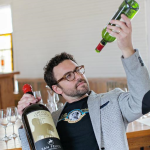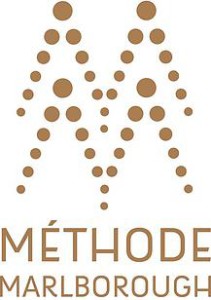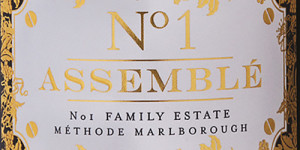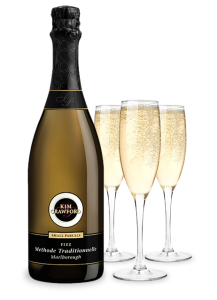The most successful people in the wine industry, whether they are conference speakers, teachers, or salespeople, are skilled at drawing connections and parallels within the world of wine. Tying regions, styles, history, and current events together is thought provoking and shows a deeper understanding of the world around us.
On the surface, this post is about the newish Méthode Marlborough; however, the subject also brings into play the greater world of sparkling wine world, as well as the on-going debate of New World vs Old World.
The Méthode Marlborough is a society, created in September 2013, in order to promote the high-quality Traditional Method sparkling wines produced in Marlborough. The requirements for a Mèthod Marlborough sparkling wine include:
- Produced using 100% Marlborough grapes
- Made in Marlborough and exclusively produced using the Traditional Method of sparkling wine production
- Made using the traditional Champagne varieties of Chardonnay, Pinot Noir, and Pinot Meunier
- Aged in the bottle, on the lees, for a minimum of 18 months
There are currently 10 producers that are making this style of wine and have joined the club:
- Allan Scott
- Cloudy Bay Vineyards
- Hunter’s Wines
- Johanneshof Cellars
- Lion
- Nautilus Estate
- No. 1 Family Estate
- Spy Valley Winery
- Summerhouse Wine Company
- Tohu Wines
These wines are just now beginning to show up on store shelves. The first-ever Méthode Marlborough sparkler to be released was No. 1 Family Estate’s Assemblé, which was sabered in celebration on August 14th 2015.
It is perhaps fitting that No. 1 Family Estate, owned by Daniel Le Brun, was the first winery to release. Le Brun is, after all, part of a Champenois family, and has produced this style of Traditional Method sparkling wine from the three Champagne grapes in Marlborough since the winery was established in 1999.
This is impressive coming from a region that specializes in – and stakes its reputation on – Sauvignon Blanc. In fact, 77% of all the vineyards in Marlborough grow Sauvignon Blanc, and some of it is used to create delightful (if, admittedly, simple) Charmat method sparkling wines.
As lovely as these Charmat method sparkling wines are, it is just this type of wine from which the Méthode Marlborough producers are trying to distance themselves. South Africa was the first new world region to recognize the need to differentiate their quality sparkling wines, and, in 1992, created the Cap Classique Producers Association. However, Cap Classique rules are a bit less stringent that those of the Méthode Marlborough is attempting to do: Cap Classique can come from anywhere in the large, diverse Western Cape Geographical Unit, the lees-aging requirement is only 12 months, and they allow the use of Sauvignon Blanc and Chenin Blanc in addition to Chardonnay and Pinot Noir.
Perhaps – and this is where the “Old World/New World” aspect of this discussion begins – a set of Old World-style quality controls is ever more important in a category of wine where the production methods can be elusive, the grapes in the blend are a mystery, and vintages are rarely discussed or disclosed. Time spent on the lees, which is a major component of a finished sparkling wine’s flavor, is also not discussed. Essentially, we’re missing the what, where, when, and why of the wine. (Thankfully, the who is published on the label.)
Controls such as these are built into the production standards of the DOCs and the AOCs of the Old World, so the customer at least has a good idea of what they are getting in the bottle, and adherence to their standards is mandatory if the producer wants to use their “stamp of approval” on the label. However, in the case of New World producers bonding together for a marketing and consumer-driven end, admission to the club is voluntary. As such, there will always be “rebels” who refuse to join – perhaps because they believe their brand is stronger that of the association – such as Kim Crawford’s “Fizz,” produced using the Traditional Method from Chardonnay and Pinot Noir.
The topic brings up many questions. Will these New World quality alliances that imitate Old World appellations will stand the test of time. How much do we rely on the Canadian VQA or the San Rafael DOC in Mendoza over individual brands? Will more regions around the world band together to “guarantee” quality in the nebulous world of sparkling wine? (I’m keeping my eye on England, Brazil, and Tasmania.)
We wait with curious minds and palates as the ten producers of Méthode Marlborough captivate our attention – and we promise to bring the bubbles, no matter what.
For more information:
 Post authored by Mark Rashap, CWE. Mark has, over the past ten years, been in the wine world in a number of capacities including studying wine management in Buenos Aires, being an assistant winemaker at Nota Bene Cellars in Washington State, founding his own wine brokerage, and working for Texas-based retail giant Spec’s as an educator for the staff and public.
Post authored by Mark Rashap, CWE. Mark has, over the past ten years, been in the wine world in a number of capacities including studying wine management in Buenos Aires, being an assistant winemaker at Nota Bene Cellars in Washington State, founding his own wine brokerage, and working for Texas-based retail giant Spec’s as an educator for the staff and public.
In August of 2015, Mark joined the team of the Society of Wine Educators as Marketing Coordinator to foster wine education across the country.



” Will these New World quality alliances that imitate Old World appellations will stand the test of time[?]”
Coro Mendocino has been plugging along for eleven vintages now. Things seem to be going well enough administratively, and the wines are building a following. I can even find them on the shelves out here in Pennsylvania sometimes.
I think what we’re seeing, broadly, is a recognition that both Old World and New World ethos have benefits for the producer and consumer. As NW producers form quality alliances and voluntarily submit to restrictions, prominent OW producers (Luis Pato in Bairrada, Alain Brumont in Le Sud-Ouest as two examples) are going “off-appellation” to produce wines that appellation laws wouldn’t allow.
And all of this is ultimately good for the consumer who gets increased variety *and* a bit of knowledge.
Thanks, Mark. Your story reminded me that even Old World folks such as Franciacorta and Trentodoc are still trying to raise awareness of their methods, to distinguish themselves from Prosecco and be considered something closer to the “C-word:” Champagne